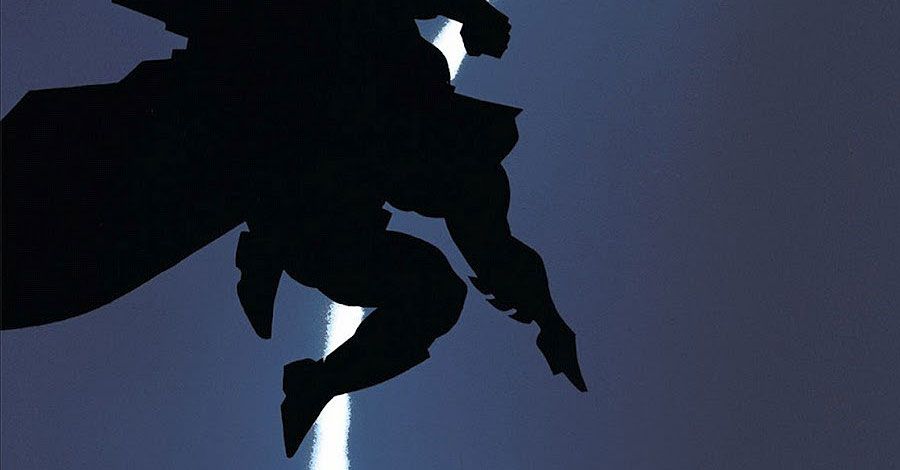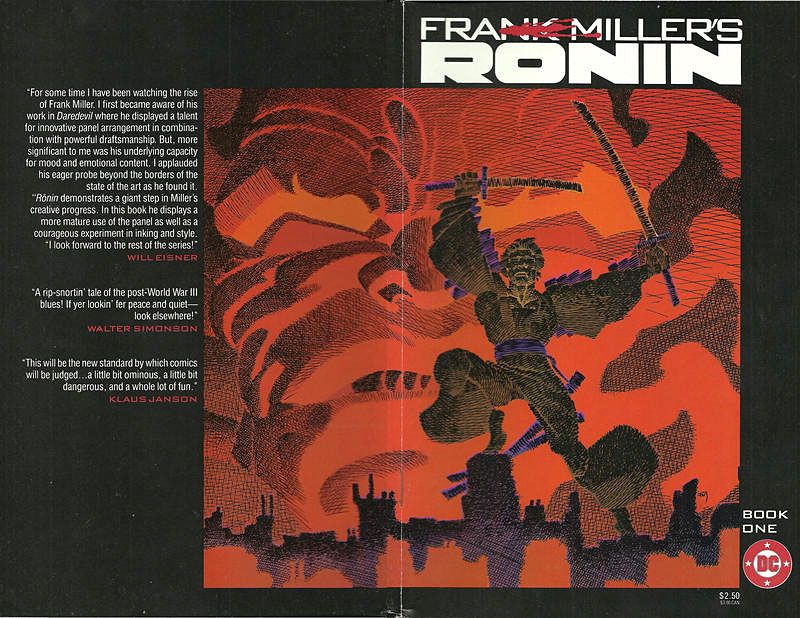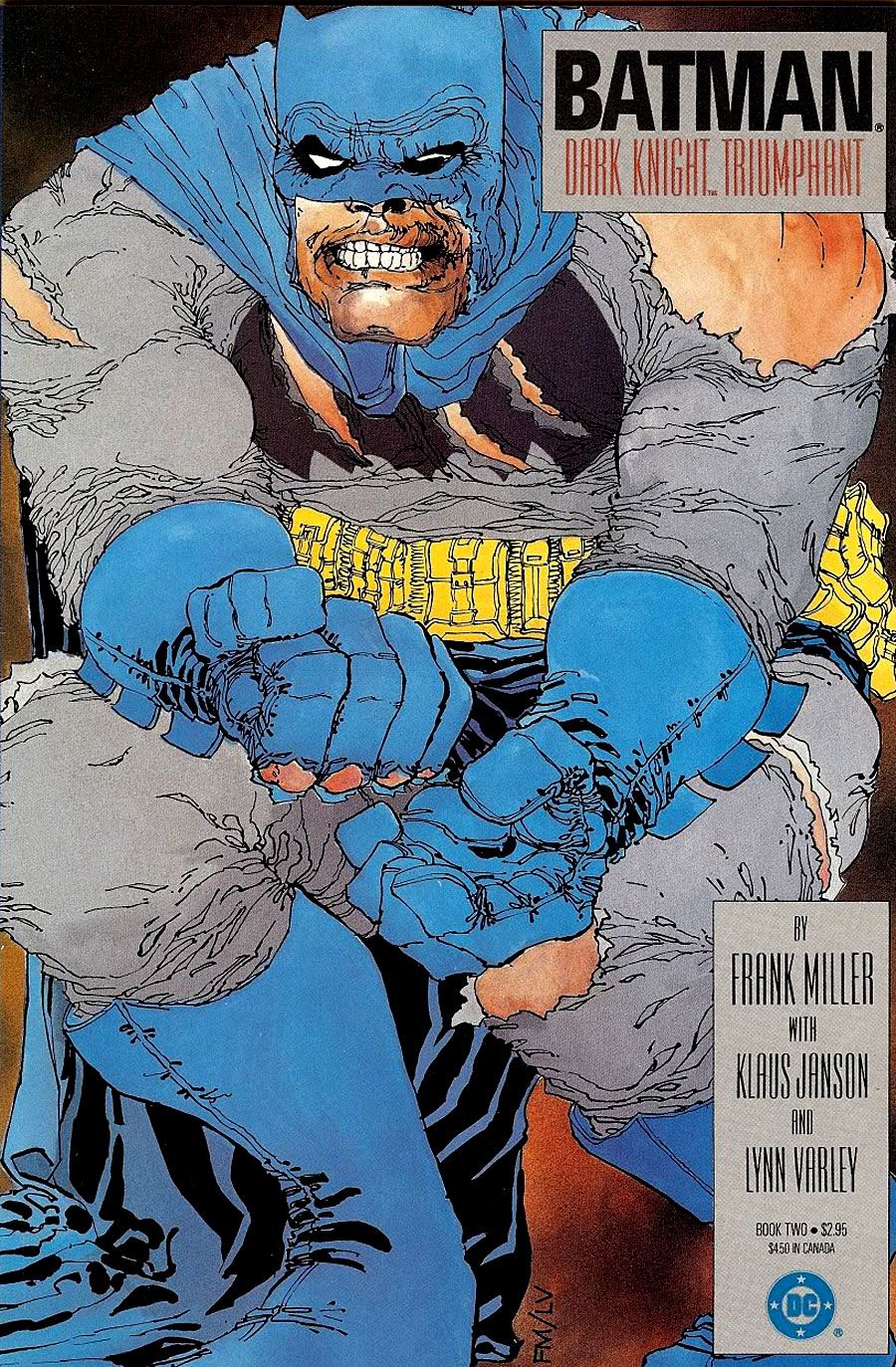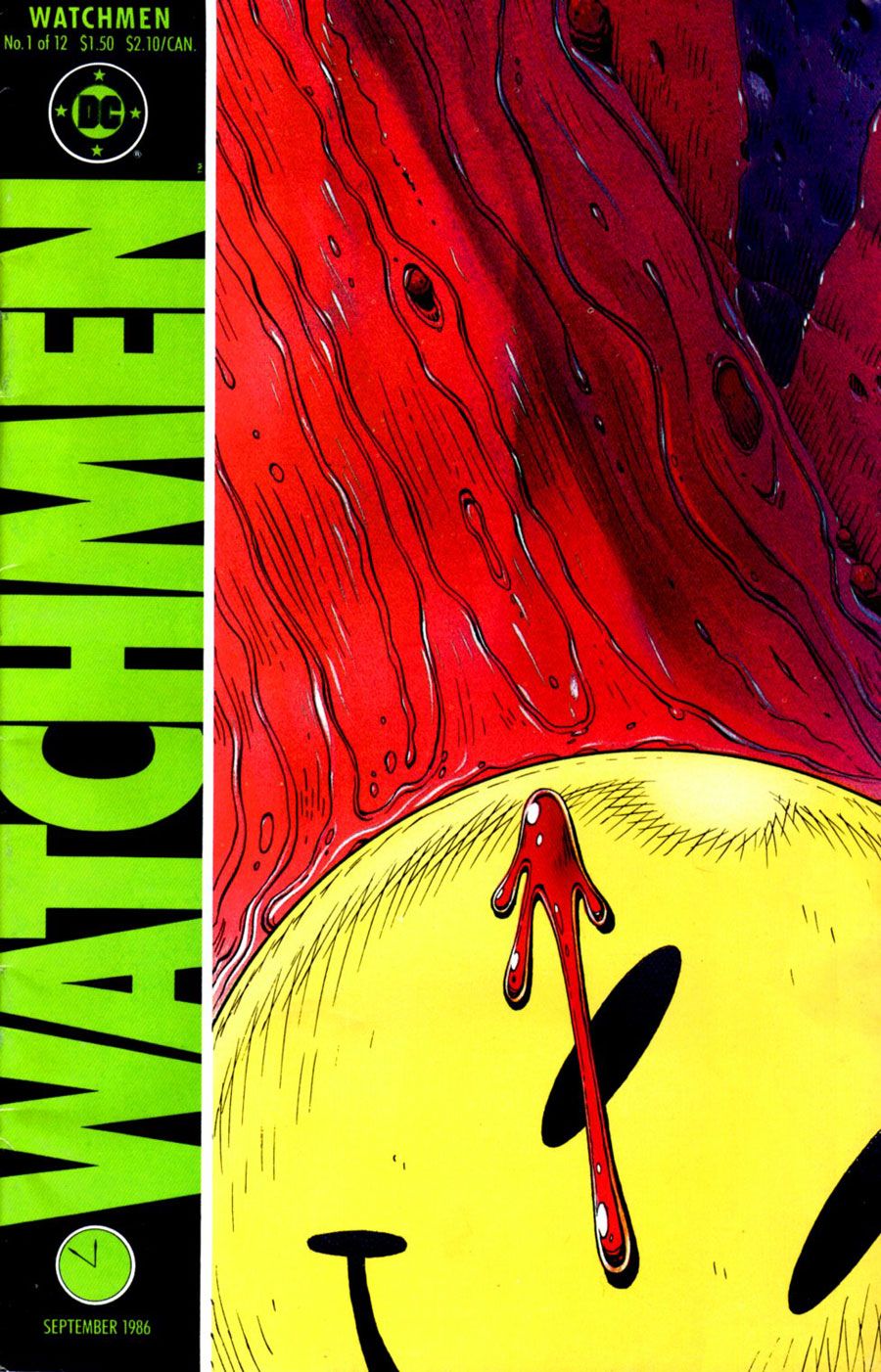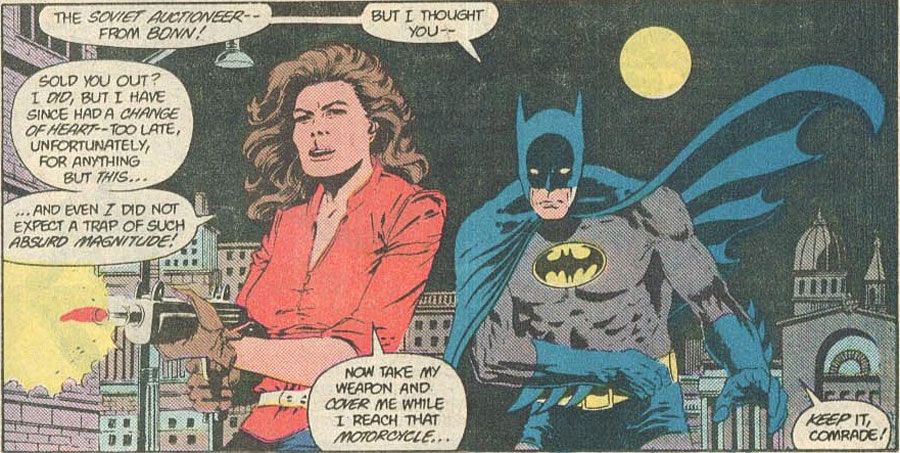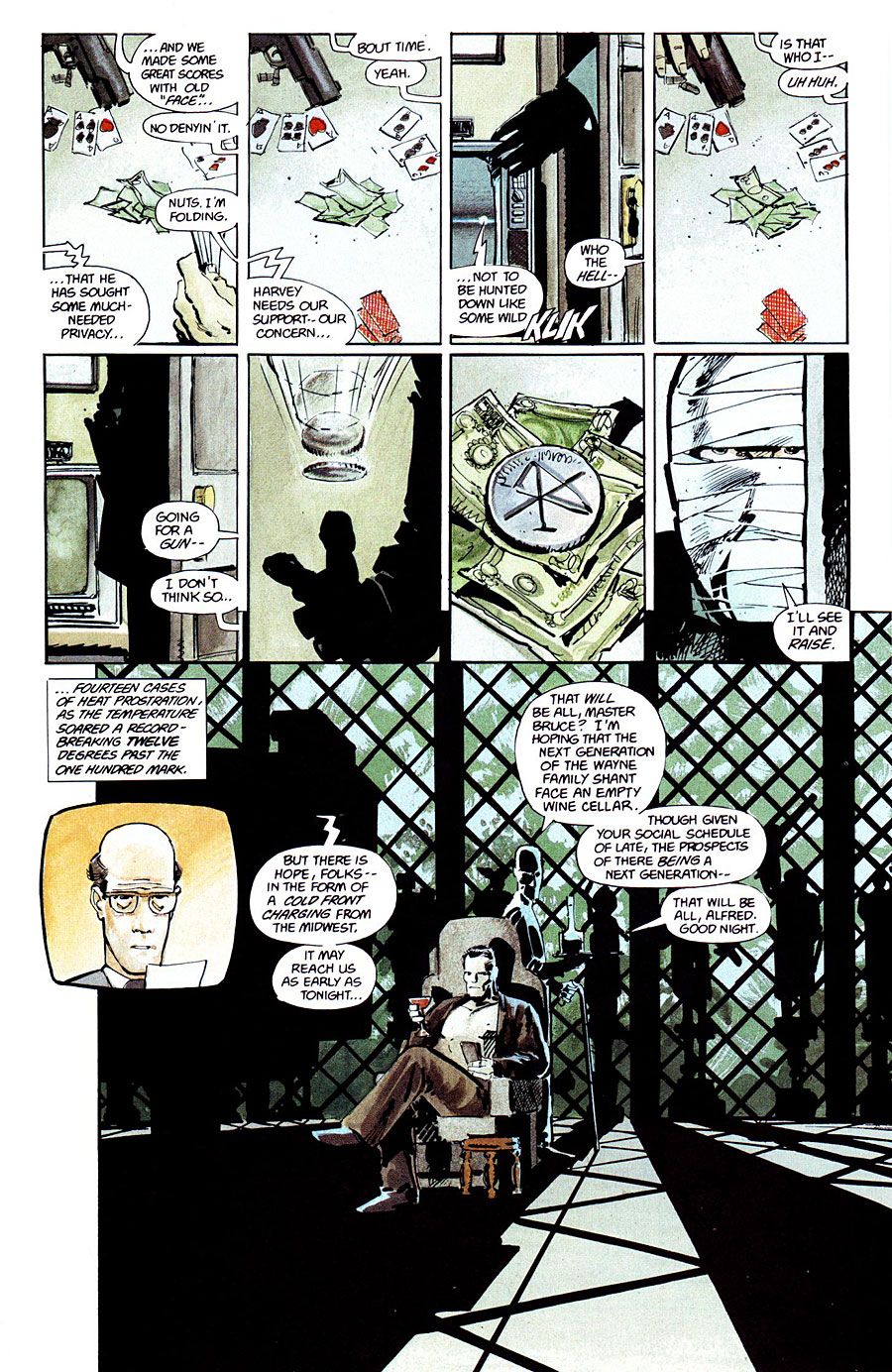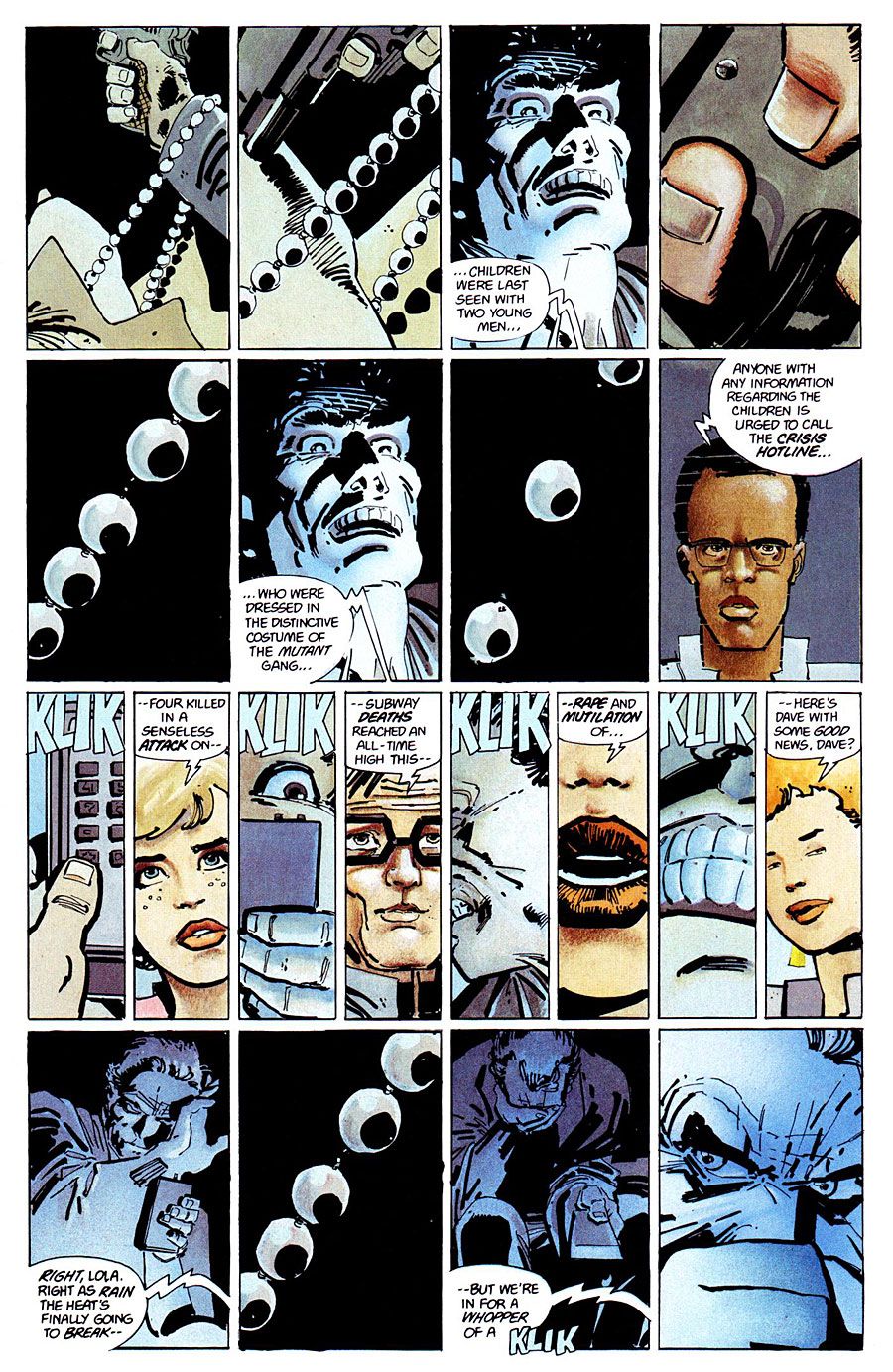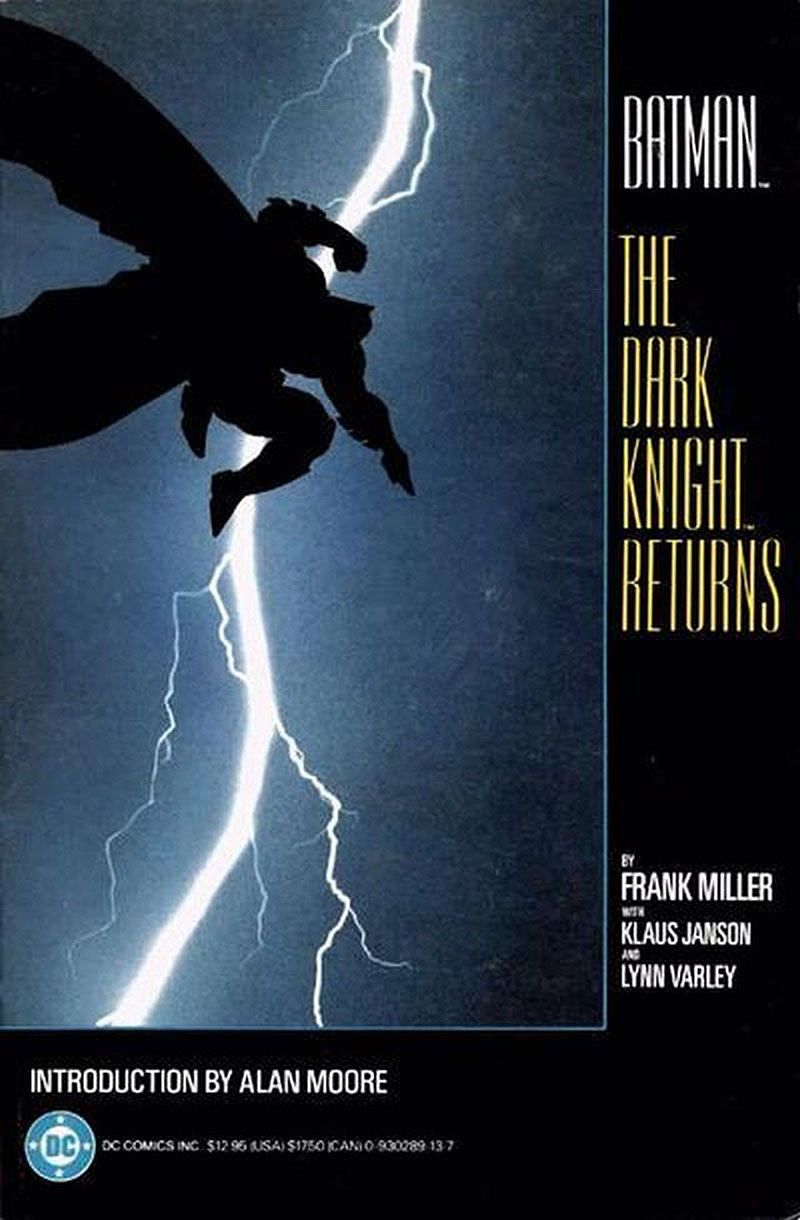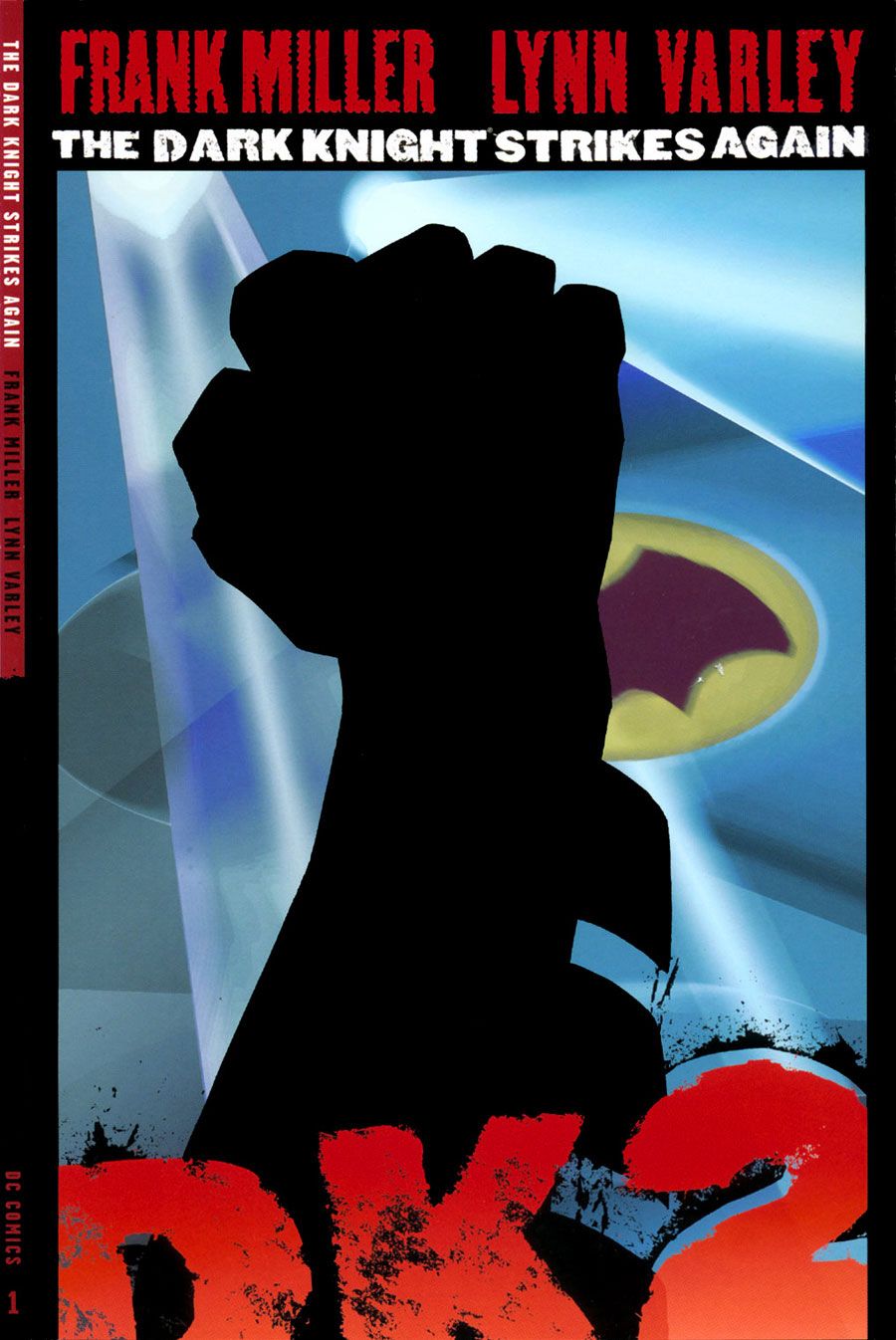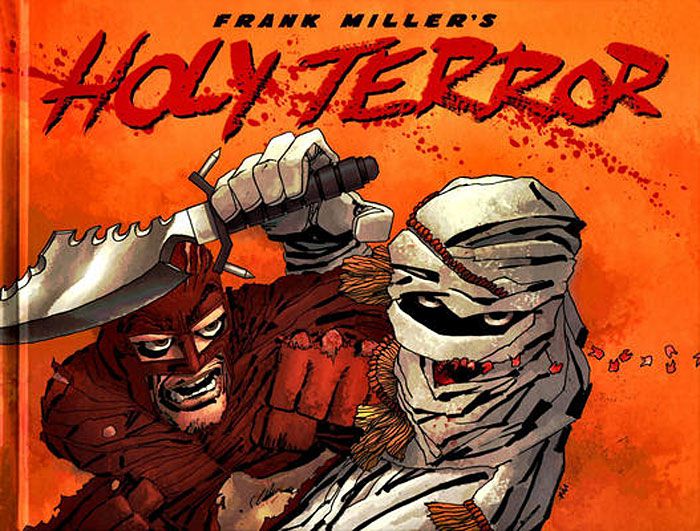Crisis Coincidence
In 1985, DC Comics began a year-long crossover called "Crisis on Infinite Earths" by Marv Wolfman, George Perez, Dick Giordano and Jerry Ordway. The purpose of the series was to streamline DC's continuity and to eliminate its multitude of "alternate" Earths. It is highly ironic, then, that before that series even finished in 1986, DC launched "The Dark Knight Returns," one of the publisher's most acclaimed series of all-time, and a story set outside of DC's established continuity. Frank Miller's big project not being in line with the rest of the DC Universe makes sense, though, when you look at how he was brought to DC Comics in the first place.
REVIEW: Frank Miller's "Dark Knight III: The Master Race" #1 Defies Expectations
How Frank Came to Town
After establishing himself as one of the most marketable artists in the entire comic book industry in the early 1980s with his work on "Daredevil" and "Wolverine" for Marvel, Miller was looking for a new challenge. In stepped Jenette Kahn, Publisher of DC Comics, and Dick Giordano, DC's Executive Editor. Kahn and Giordano very much wanted DC to be in the Frank Miller business and offered Miller a groundbreaking deal for his next project, the futuristic samurai series "Ronin."
Born out of the research Miller had been doing for the various ninja storylines in "Daredevil," "Ronin" was originally meant to be published as a graphic novel for Marvel. Kahn, however, managed to get a lunch with Miller where she said to him, "Tell me what it is that you would really like to do. I don't care how offbeat it is or if it's never been done before. Whatever it is, we'll try to make it happen." Miller had a very specific idea of what he wanted his comic to look like, from page stock to the coloring techniques, so DC assigned Bob Rozakis to make sure "Ronin" would be at the forefront of the comics industry in terms of paper quality and coloring. In addition, they let Miller tell whatever story he wanted to, and, of course, he was paid a lot of money to do so.
The resulting miniseries, which was released in 1983-84, was not much of a sales success, but it got DC Comics into the game with Miller. In 1985, Giordano named Miller one of the Fifty Who Made DC Great, a celebration for DC's 50th Anniversary. DC was betting big on Frank Miller, and that bet payed off big time when Miller pitched Giordano on the project that became "The Dark Knight Returns."
Batman's Return Made Customers Return
Set in a world where Batman had been retired from crimefighting for a decade before being forced back into action, was groundbreaking not only in its story concept, but in how it was presented to the world. DC created a new format for "Batman: The Dark Knight," as it was originally called. ("The Dark Knight Returns" was just the name of the first book before it became known as the generic name of the whole series.) This "prestige format" included a cardstock cover, square binding instead of the traditional stapled spine, and glossy paper that really showed off Lynn Varley's vibrant colors. That level of quality didn't come cheap; the comic cost $2.95 an issue at a point in time when the regular "Batman" comic cost 75 cents.
DC promoted the comic well, though, and it ended up bringing in loads of grown-up fans who wanted to see this take on the hero at a time when new approaches to classic characters were still, well, new. The book was a massive sales success, but Dick Giordano, who had been integral to the launch of the series as the book's editor and helped Miller develop the overall story, was now at odds with Miller over the schedule of the comic. Interestingly enough, Giordano was never much of a stickler for deadlines with books. He and his second-in-command, Paul Levitz, would often clash over deadlines, as Giordano famously quoted a John Byrne line, "No one ever picked up a comic book and said, 'This book is really on time.'" However, Miller took the freedom given to him perhaps a bit too far, as the fourth issue ended up being released roughly four months after the third. It was during this point that Giordano left the project entirely, with Denny O'Neil, Miller's former "Daredevil" editor, being brought in to oversee the series' completion, while Richard Bruning became Miller's liaison with DC's higher-ups. O'Neil's presence on the series was a big change for DC, and his influence soon loomed large for the Batman titles in general.
The "Watchmen" Gap
It is very likely that we will never know for sure what impact "Watchmen" had on "The Dark Knight Returns," but it appears as though it had a large one. That four-month gap between the third and fourth issues of "Dark Knight Returns: coincided with Miller reading early copies of Alan Moore and Dave Gibbons' seminal series, about a world where the government has outlawed superheroes. When Miller's fourth issue debuted, fans found a story about Batman's revolt against the government, a theme that wasn't really present in previous issues. Miller also goes into much more of a government satire in the fourth book, with Superman essentially presented as a stooge of the United States government. Was this due to Miller reacting to the work of Moore and Gibbons? It seems likely, but it is virtually impossible to know for sure.
Batman at the time of "The Dark Knight"
The fascinating thing about "Batman" at the time of the release of "The Dark Knight" is the lack of a dramatic difference in style between the two books. It was not like Batman was fighting space aliens in his regular comic at the same time Miller was having him breaking bones in "The Dark Knight." Doug Moench was the writer on both "Batman" and "Detective Comics" under the editorship of Len Wein, and the comics surely had their share of darkness to them. "Batman" #393, released the same month as "Dark Knight Book One," was an adventure tale by Moench and guest penciler Paul Gulacy that evoked Moench and Gulacy's acclaimed run on "Master of Kung Fu" at Marvel. It was a tale of international intrigue, with Batman traveling the globe, trying to track down a statue for the CIA and coming into conflict with Russian agents.
However, it is fair to say that the Batman titles did get considerably darker in the wake of "The Dark Knight," specifically when O'Neil was put in charge of the line of comics. He brought Miller on board to tell the origin of Batman in "Year One" with artist David Mazzucchelli, and after "The Dark Knight" and "Year One" were released, Max Allan Collins' much more traditional Batman stories suddenly seemed to be out of place for the character, with their more upbeat stories.
It was when Jim Starlin replaced Collins on "Batman" that the Miller influence really began to take hold of the Bat-books. Starlin took over while he was in the midst of putting together the prestige format series, "Batman: The Cult" with artist Bernie Wrightson, a tale that was extremely evocative of "The Dark Knight Returns" and that carried over into Starlin's "Batman" run, which ended with the death of Jason Todd, the second Robin. Alan Grant (at first working with John Wagner, but very soon writing the book solo) and Norm Breyfogle took over "Detective Comics" from Barr, and their stories were darker, as well. When director Tim Burton's 1989 "Batman," itself very influenced by Miller's work, came out, it solidified the "Dark" aspect of the Dark Knight for the Batman titles for years to come, cementing Miller's influence on the character's legacy.
Paging John Gielgud...
A lesser well known impact of "The Dark Knight Returns" is how Miller's take on Batman's loyal butler, Alfred Pennyworth, affected the character in the DCU-proper. Miller based his Alfred on John Gielgud's Academy Award-winning performance as Hobson, the butler to Dudley Moore's Arthur in the film of the same name. Alfred was now sharp and sarcastic, traits that would soon be picked up on by all other future Batman writers.
Miller was also the first comic book writer to portray Alfred as being the Wayne butler when Bruce was a child, an idea that had first appeared in a surprising place, and something that has become a well-established aspect of Alfred's history since.
Pearls Before Swine
Another massive impact of "The Dark Knight Returns" was Miller's depiction of the death of Thomas and Martha Wayne. Martha's pearl necklace breaking and the pearls falling to the ground as she is murdered has become one of the most iconic visual images in Batman's history, and it all started in an alternate-reality story.
People Will Read Books of Comics?
Perhaps the most impactful aspect of "The Dark Knight Returns" came when it was collected into a mass market trade paperback at the end of 1986. The $12.95 book (with a foreword by Alan Moore, was a massive sales success and more or less led to the creation of DC's trade paperback program. Up until that point, other than some random Batman and Superman collections, the idea of trade paperbacks collecting comic book series was a very novel one. Marvel had only recently released a few of their more memorable recent stories into trade paperbacks (Iron Man's "Demon in a Bottle" and X-Men's "Dark Phoenix Saga"), but this was an entirely new concept for DC. "Ronin," for instance, had not been collected at the time.
When "Watchmen" followed suit with its own mass market trade paperback in 1987, DC was shocked to discover the size of the audience for these types of collections. Putting it into context, when Alan Moore struck his deal with DC Comics for "Watchmen," the deal involved him getting the rights to the series and characters once the comic was no longer in print. He made that deal because at the time, comics never remained in print in perpetuity -- it just wasn't done. Now, "Dark Knight Returns" has remained in print for thirty years, "Watchmen" for just under thirty, and neither is going to go out of print any time soon.
Frank Miller Returns
After his work on "Year One" for DC and "Born Again" for Marvel (both with Mazzucchelli), Miller spent most of the 1990s working at Dark Horse on creator-owned works like "Hard Boiled," "Give Me Liberty," "Sin City" and "300," although he did return to Marvel for a Daredevil: Year One story, "Man Without Fear," in 1993. He also spent some time working in Hollywood, writing the screenplay for the second and third "Robocop" films. While working on "Sin City," Miller worked with editor Bob Schreck; in 1999, Schreck was named the editor of the Batman line of comics, replacing Denny O'Neil. Shreck's relationship with Miller was critical to getting Miller to agree to return to DC Comics for a sequel to "The Dark Knight Returns."
"The Dark Knight Strikes Again" tells of how Batman rallies the world's superheroes both against Lex Luthor and an invasion by Brainaic. Superman is once again resistant to Batman's efforts, but he ultimately agrees that Batman's way is the best, following Batman as he leads the world's heroes to a defeat of both villains. Following themes established at the tail end of "The Dark Knight Returns," one of the biggest aspects in "The Dark Knight Strikes Again" is Miller's disgust at the media and the way they are able to skew the truth in a multitude of ways, including what Miller views as a common tactic of distracting people from what is really going on in the world. Talking heads were a common foil of Batman in "The Dark Knight Returns," a storytelling device that was taken to an even greater extreme in "Dark Knight Strikes Again."
9/11 and The Dark Knight
The first book of "The Dark Knight Strikes Again" was released in December 2001, just three months after terrorists attacked and destroyed the World Trade Center in New York City. Miller later recalled, "I was halfway into writing the second chapter in which a giant bomb goes off in Metropolis and 9/11 happens... It was a little beyond resonant, and downright creepy. It was then that I knew that I really had to find my own way as a pop fiction guy to respond to what had happened, and to the new world that had been revealed."
Miller's reaction was delayed a bit, however. While the third book of "Dark Knight Strikes Again" contains some minor reactions to 9/11, for the most part, Miller concentrated his response to 9/11 as a separate project. Miller began to create a graphic novel called "Holy Terror, Batman," where Batman would hunt down Osama Bin Laden. This was Miller's attempt to do his version of Captain America punching out Hitler on the cover of "Captain America Comics" #1 in 1940, a year before the United States even declared war on Nazi Germany.
Ultimately, Miller decided not to do the story at DC, noting, "It's no longer a DC book. I decided partway through it that it was not a Batman story. The hero is much closer to Dirty Harry than Batman. It's a new hero that I've made up that fights Al Qaeda." (Interestingly enough, the 1983 Dirty Harry film "Sudden Impact" was a direct inspiration for Miller's Batman in "Dark Knight Returns," as both stories were about grizzled crimefighters in their 50s being drawn back into a world they thought they had left behind.) The book, starring The Fixer, eventually debuted as a graphic novel at Legendary Comics in 2011, where Bob Scheck had become Editor-in-Chief.
Of course, Miller continued to work with DC Comics on "All Star Batman and Robin" between 2006 and 2008, a series drawn by Jim Lee and Scott Williams. The series was essentially Miller's take on what the Batman of "The Dark Knight Returns" was like when he was younger. Now, Miller is returning to the world of the Dark Knight with "Dark Knight III: The Master Race," and has been discussing plans for even more stories set in the title character's universe once this series concludes.

